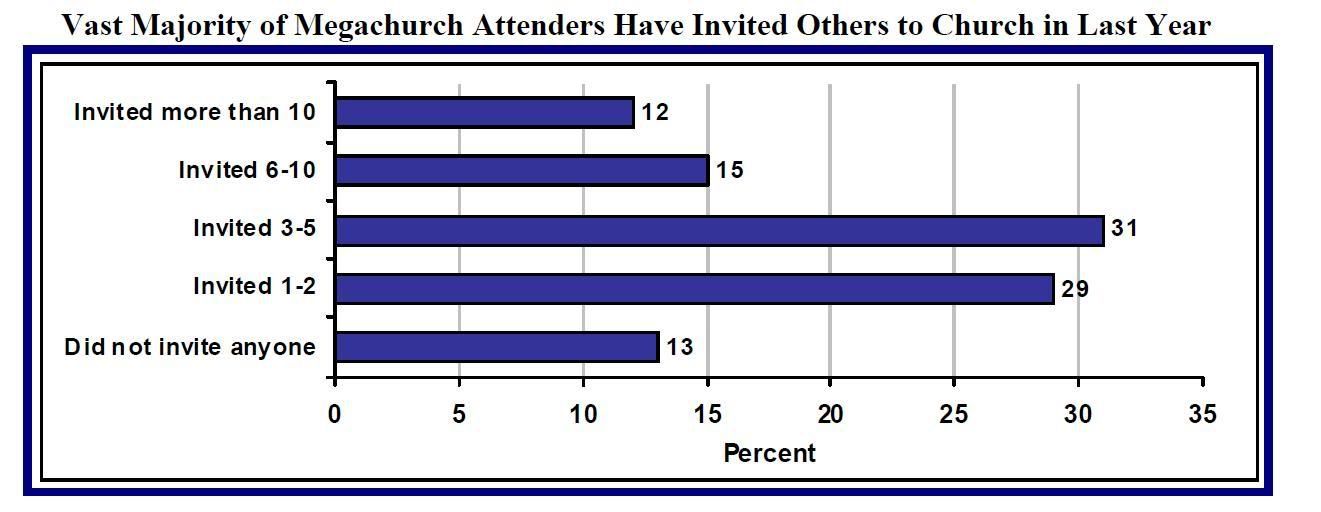- Young and single adults are more likely to be in megachurches than in smaller churches.
- Nearly two-thirds of attenders have been at these churches 5 years or less.
- Many attenders come from other churches, but nearly a quarter haven’t been in any church for a long time before coming to a megachurch.
- Attenders report a considerable increase in their involvement in church, in their spiritual growth, and in their needs being met.
- Forty-five percent of megachurch attenders never volunteer at the church.
- New people almost always come to the megachurch because family, friends or coworkers invited them.
- What first attracted attenders were the worship style, the senior pastor and the church’s reputation.
- These same factors also influenced long-term attendance, as did the music/arts, social and community outreach and adult-oriented programs.
- Attenders can craft unique, customized spiritual experiences through the multitude of ministry choices and diverse avenues for involvement that megachurches offer.
"Even one of the mainstays of megachurch programming -- participation in small groups of different sorts -- is engaging only 60% of attenders. Forty percent of attenders said they do not participate in any small group. This is interesting given that in our national research the percentage of megachurches saying small groups are central to their functioning rose dramatically in less than a decade. In 2000, just half (50%) of the megachurches said small groups were central to their strategy for Christian nurture and spiritual formation. By 2008, that number had risen to 84% of megachurches affirming the centrality of a small group strategy. Yet, this increased emphasis on small group ministry does not appear to havemotivated a large percent of attenders to active involvement in these groups."60% participation in almost any facet of the church seems like pretty strong participation, especially when earlier in the study 11% of responders claimed that the megachurch they were attending was not their "church home." So you can knock 11% of people out of the potential small-group-attender pool.
Another interesting finding is shown in this table.

I think any church would be ecstatic to have 27% of their people inviting 6-10 people per year to church. In a church of 100 people that would be 162-270 new visitors each year or 3-5 visitors per week.
The question is, why are megachurch attenders so eager to invite friends to church?
For more information here's the full study (.pdf).
1 comment:
Gabe, the chart says they "Invited others to come", but does not say that those people actually responded to the invitation and came to church. Did the study clarify that?
I think it's much easier for people to invite others to a typical megachurch because it's more like big social event, with lots of entertainment, at least more entertaining than the typical midsize church that doesn't have the big $$ budget to spend every Sunday.
In other words, its easy to understand why somebody would be more willing to say to an acquaintance, "Hey, come to Rockpoint North X-Treme Church on Sunday. We have rockin good music, and the preacher is a comedian!"
As opposed to somebody at a midsized/small church saying, "Hey, come visit our church. We sing some praise songs, and then listen to a sermon."
It sure would be interesting if we had some kind of measurement criteria for spiritual maturity to be able to compare the two. But then, nobody can agree on what spiritual maturity is either, so I guess we are back to where we started.
Post a Comment